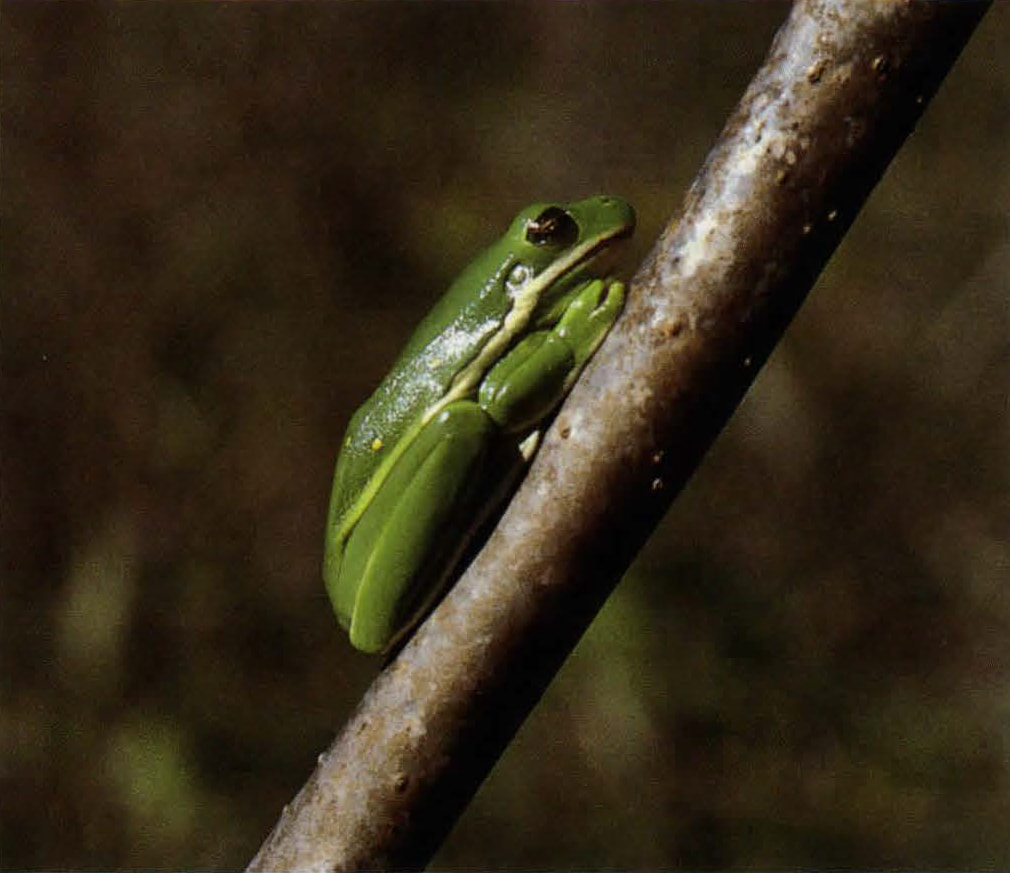Green treefrogs are native to the coastal plain of the eastern United States, from Maryland to peninsular Florida, across to Texas and up the Mississippi Valley to southern Illinois. In Alabama, they are typically encountered from the central zone to the Gulf Coast, with a few isolated populations in the Appalachian Plateau.
Lakes, ponds, swamps, and streams are prime habitats for green treefrogs, especially those places with abundant emergent vegetation. During daylight hours, they may be found sitting quietly or sleeping on leaves or stems, with their legs folded beneath them; they are also known to hide under loose bark and in tufts of Spanish moss. A sit-and-wait foraging strategy is utilized, with frogs leaping to spear flies, beetles, and spiders that wander too close. Some individuals have learned to frequent windows at night, where they seek insects attracted by the lights. Green treefrogs, in turn, become prey for various animals, including large aquatic birds, snakes, raccoons, and fish.
In Alabama, male green treefrogs can be heard singing from April to August, perched on cattails or reeds one to three feet above the water. Their courtship call--a ringing, nasal "quonk" or "quank"--is repeated in a measured cadence, thirty to sixty times per minute. Females, attracted by the calls, move toward the males and are soon mounted; from three to five hundred brown-and-cream fertilized eggs are released per pair. After a few days, the eggs develop into tadpoles, which two months later metamorphose into mature forms.
While the above follows the basic amphibian reproductive scenario, green treefrogs are known to throw in a major twist. Males engage in "sexual parasitism," an arrangement in which calling males are accompanied by one or two silent satellite males. When a female moves toward a calling male, a satellite will intercept her and mate with her. Parasitism is involved because the calling male risks his life by attracting predators, yet gets nothing for his efforts. In a further wrinkle, males may change from calling to satellite status and back again on alternating nights or even on the same night.
In terms of reproductive success, green treefrogs appear to be doing far better than many of their cousins. In recent years, scientists have noted a dramatic decline in amphibian numbers, with both local populations and entire species seeming to disappear overnight. Many explanations have been proposed: destruction of wetlands and rain forests, pesticide pollution, heavy metal contamination, global warming, acid rain, ozone depletion, and increased
ultraviolet radiation--even the harvest of frog legs for food! While the scientific jury is still out as to why the decline has occurred, the problem remains very real. Amphibians, in fact, may be replacing birds as monitors of environmental health, forming an early warning system signaling both imbalances and advanced degradation.
But if noise levels at Alabama wet spots can be trusted, green treefrogs are doing just fine. As long as there are males going "quonk" in the night--and
some satellites to do much of the mating--the species should survive.

 RSS Feed
RSS Feed